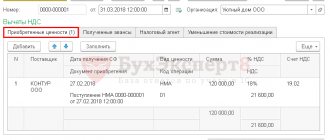How do general rules and local specifics relate?
The rules for calculating and paying property tax for individuals are enshrined in Chapter 32 of the Tax Code. The provisions of this chapter are the same for all municipalities of the Russian Federation, but local authorities have the right to establish some features within the framework of general rules.
Thus, the municipality can approve its tax rates. The main thing is that the “local” value fits within the framework established by Chapter 32 of the Tax Code of the Russian Federation. In addition, “local” rates may not be uniform, but differentiated, that is, depending on the type of object, its location, cadastral or total inventory value, or on the type of territorial zone.
In addition, municipalities are allowed to increase the amounts of tax deductions established in the Tax Code of the Russian Federation and introduce additional benefits. But local authorities do not have the right to reduce deductions and reduce the list of benefits.
Tax rates and deductions can be found at your tax office.
Who pays the tax
Individuals (including individual entrepreneurs) are owners of residential buildings, rooms, apartments, garages, parking spaces, unified real estate complexes, unfinished construction projects and other buildings, structures, premises and structures (including non-residential). Taxpayers are also the owners of residential buildings located on household plots, vegetable gardens, gardening associations and on land plots intended for individual housing construction.
Fill out and submit declarations on land, transport and “property” taxes via the Internet Submit for free
Who doesn't pay tax
Chapter 32 of the Tax Code of the Russian Federation provides a closed list of citizens exempt from personal property tax. These are disabled people of groups I and II, disabled children, pensioners, veterans, heroes of the Soviet Union, heroes of the Russian Federation and a number of other categories.
If a person entitled to a benefit owns several properties of the same type at once, the benefit is provided only in relation to one of them at the choice of the taxpayer. Let's explain with an example. Let’s say a veteran owns two apartments and three garages. Then he is entitled to a benefit of one apartment and one garage. The remaining apartment and two garages are taxed on a general basis.
There are other restrictions. Thus, the benefit can only be obtained in relation to real estate that is not involved in business activities. In addition, unfinished construction projects and single real estate complexes are not eligible for the benefit under any circumstances.
To receive a benefit for the current year, you need to notify the tax office about the selected preferential object before November 1 of this year. You can only change your choice starting next year. You should also write an application (for the application form, see “A new application form has been approved for granting benefits to individuals on “property” taxes”). If the “beneficiary” does not notify the Federal Tax Service about which object he wants to exempt from tax, the inspectors themselves will make a choice. This will be the object for which the tax amount is maximum.
Benefits for property tax for individuals
The Tax Code of the Russian Federation exempts from paying taxes on property of individuals:
- Heroes of the Soviet Union and the Russian Federation, persons awarded the Order of Glory of three degrees;
- disabled people of disability groups I and II;
- disabled since childhood;
- participants in the Civil War, the Great Patriotic War, and other military operations to defend the USSR, combat veterans;
- "Chernobyl";
- military personnel with 20 years or more of military service;
- participants in special risk units in testing nuclear and thermonuclear weapons, eliminating accidents at nuclear installations at weapons and military facilities;
- family members of military personnel who have lost their breadwinner, recognized as such in accordance with Federal Law No. 76-FZ of May 27, 1998 “On the status of military personnel”;
- pensioners;
- citizens who performed international duty in Afghanistan;
- individuals who received radiation sickness or became disabled as a result of work related to any types of nuclear installations;
- parents and spouses of military personnel and government employees killed in the line of duty;
- individuals carrying out professional creative activities - in relation to specially equipped premises, structures used by them exclusively as creative workshops, ateliers, studios, as well as residential premises used to organize non-state museums, galleries, libraries open to the public - for the period such use;
- individuals - in relation to economic buildings or structures, the area of each of which does not exceed 50 square meters and which are located on land plots provided for personal subsidiary farming, dacha farming, vegetable gardening, horticulture or individual housing construction;
- and some other categories of citizens.
The laws of St. Petersburg and Moscow, as well as the regulations of municipalities, the list of beneficiaries for the property tax of individuals can be supplemented, expanded and differentiated.
Who calculates the tax
Tax authorities calculate the amount of property tax for individuals. They also send the taxpayer a notice of payment. In this case, employees of the Federal Tax Service can present tax for payment for no more than three years preceding the year when the notification was sent. If they include tax for earlier periods in the notice, the taxpayer has the right not to transfer the money.
In practice, it often happens that information about purchased apartments, houses, garages, etc. does not reach the tax authorities in a timely manner. In this regard, no notifications are sent and, as a result, no tax is paid.
To resolve this problem, the following obligation has been introduced for individuals. Citizens who own real estate must independently inform the inspectorate about objects subject to property tax. But this does not always need to be done, but only if during the entire period of ownership of the property the inspectors never sent a notice of tax payment. In addition to the message, it is required to provide documents confirming ownership. This must be done before December 31 of the year following the expired tax period. Individuals who fail to fulfill this obligation may be fined in the amount of 20% of the unpaid amount of tax in relation to an object “hidden” from inspectors.
Statute of limitations for paying property taxes
In accordance with tax legislation, a taxpayer is obliged to pay property taxes for no more than three tax periods preceding the calendar year of sending the tax notice.
At the same time, tax authorities are prohibited from sending tax notices for more than three tax periods preceding the year in which it was sent.
For example, in 2021 the tax office has the right to send a tax notice about the payment of taxes for 2021, 2021 and 2021, but sending a tax notice for 2021 will be illegal. An individual has the right to appeal illegal actions in sending a tax notice to a higher tax authority, and then (if the complaint is refused) to the court.
How the tax base and tax rate are determined
To calculate the amount of tax, you need to know the values of such indicators as the tax base and tax rate. Until 2021 inclusive, two options were possible for determining the base and rate: based on the cadastral value of the object and based on the inventory value of the object.
In 2021 and beyond, only the first option remains. In other words, in all regions without exception, the base and rate of property tax for individuals is determined only by the cadastral value.
Property tax rates for individuals
Property tax rates for individuals are set “locally” - by regulations of municipalities or cities of federal significance.
However, the Tax Code provides limits on these rates.
If the tax base is determined by the cadastral value of the property, then the rates should not exceed:
- 0.1% in relation to: residential buildings and premises;
- objects of unfinished construction of residential buildings;
- single complexes, which include at least one residential premises or house;
- garages and parking spaces;
- economic buildings or structures, the area of each of which does not exceed 50 square meters and which are located on land plots provided for personal subsidiary plots, summer cottage farming, vegetable gardening, horticulture or individual housing construction.
These rates at the local level can be reduced to zero or increased by no more than 3 times.
If the tax base is determined by the inventory value of the property, then the rates are set as the total inventory value of the property multiplied by the deflator coefficient (in 2017 it is equal to 1.425). They must not exceed:
Let us once again draw your attention to the fact that municipal authorities and the authorities of federal cities can independently establish and differentiate rates for property tax for individuals.
The deflator coefficient for 2021 was established by Order of the Ministry of Economic Development of Russia dated November 3, 2016 N 698.
How is the tax base determined based on the cadastral value?
The tax base is calculated for each object. The tax base is the cadastral value of the property as of January 1. If the object is formed in the middle of the year, then the cadastral value is taken as of the date the object is registered for cadastral registration. The cadastral value can be found in the documents for the object, in the offices of Rosreestr and the cadastral chamber, in Multifunctional Centers (MFC) or on the official website of Rosreestr. This information is provided free of charge.
When calculating the tax amount, the cadastral value is reduced by the amount of the tax deduction. Chapter 32 of the Tax Code of the Russian Federation provides the following deduction values: for an apartment - the cadastral value of 20 square meters, for a room - the cadastral value of 10 square meters, for a house - the cadastral value of 50 square meters, for a single real estate complex - 1,000 000 rub. We illustrate the calculation of the base with an example.
Example
The cadastral value of an apartment is 4,500,000 rubles, and the cadastral value of one square meter is 90,000 rubles. Then the amount of the tax deduction will be equal to 1,800,000 rubles (20 x 90,000 rubles), and the size of the tax base will be 2,700,000 rubles (4,500,000 - 1,800,000).
Municipalities have the right to increase deductions without any restrictions. If, as a result, the amount of the deduction is greater than the cadastral value of the property, the tax base will become zero. A negative base value is not allowed.
How the tax base was determined based on inventory value until 2021
The tax base was calculated for each object. In those regions where tax calculation based on cadastral value was not introduced until 2021, the base for the property tax for individuals was the inventory value of the property. It was installed by the Technical Documentation Bureau (BTI) and reported to the tax authorities.
When calculating the amount of tax, the inventory value was multiplied by a deflator coefficient, the value of which was established annually by the government of the Russian Federation (in 2021 it was 1.518).
The inventory value can be found at the BTI branch at your place of residence. To do this, you need to write an application, present your passport, documents for the property and pay for the services.
Tax rates
When determining the base based on the cadastral value
For residential buildings and residential premises, unfinished residential buildings, garages and parking spaces, the rate is 0.1% of the cadastral value. Local authorities have the right to increase this value, but not more than three times. Municipalities can also lower the rate to any value down to zero.
For administrative, business and shopping centers, non-residential premises used for offices, retail facilities, catering and consumer services, as well as facilities with a cadastral value above 300 million rubles, the rate is 2% of the cadastral value. This value is the maximum permissible, that is, municipal authorities can lower it, but cannot increase it.
For all other objects, the maximum allowable rate is 0.5% of the cadastral value.
When determining the base based on inventory value (until 2020)
For regions where the tax until 2021 was determined based on the inventory value of objects, the Tax Code of the Russian Federation established acceptable rates:
| The total inventory value multiplied by the deflator coefficient (taking into account the taxpayer’s share in the common property right) | Acceptable bet value |
| up to 300,000 rub. inclusive | up to 0.1% inclusive |
| over 300,000 rub. up to 500,000 rub. inclusive | over 0.1% up to 0.3% inclusive |
| over 500,000 rub. | over 0.3% up to 2% inclusive |
Local authorities chose the value of the rate from the acceptable range and approved it by normative legal act. If the municipality did not approve its rate, the following values were applied. For objects whose total inventory value, multiplied by the deflator coefficient (taking into account the taxpayer’s share), did not exceed 500,000 rubles. inclusive, the rate was 0.1%. For all other objects the rate was 0.3%.
Rates
Article 406 of the Tax Code of the Russian Federation specifies the base rates for calculating tax collection. They can be lowered by decision of local authorities to 0% or increased, but not more than 3 times.
For calculations according to the new rules, the following rates apply:
- 0.1% – for apartments, rooms, garages, residential buildings, parking spaces;
- 2% – for administrative and business buildings, shopping centers and other objects whose price exceeds 300 million rubles;
- 0.5% – for other objects.
Based on clause 8.1 of Art. 408 introduced a limit on the annual increase in the amount of tax collection. When calculating tax based on cadastral valuation, starting from the third tax period, a coefficient of 1.1 will be applied. This coefficient is intended to curb the surge in the amount of tax payable.
If the calculated amount of tax exceeds the amount collected for the previous period, then the taxpayer will need to pay the amount of tax calculated for the previous year and multiplied by a factor of 1.1.
The coefficient will not apply to real estate for commercial purposes, such as commercial and administrative buildings, but it does apply to garages and parking spaces located in them.
During the transition period from 2015 to 2021, a special coefficient is applied when calculating to reduce the amount of tax:
- 0.2 – in the first year;
- 0.4 – in the second year;
- 0.6 – in the third year.
The procedure for applying the coefficient is prescribed in clause 8 of Art. 408 Tax Code of the Russian Federation. If, when calculating the tax fee based on the cadastral value, its amount is less than or equal to the amount of tax calculated based on the inventory assessment, then the reduction factor is not applied.
To calculate the inventory value, the tax rate is set based on the assessment of the object, taking into account the taxpayer’s share in ownership:
- up to 300 thousand rubles – 0.1%;
- 300-500 thousand – 0.1-0.3%;
- over 500 thousand – 0.3-2%.
A reduction factor may be applied to bets. It can be established depending on the specific parameters of real estate, such as the type of object, its location or the territory within the boundaries of which it is located.
What is the amount of tax payable?
The amount of tax payable is equal to the tax base multiplied by the tax rate. The amount payable is calculated based on the results of the tax period, which is equal to one calendar year.
In cases where ownership of a property arose or ceased in the middle of the year, property tax must be calculated taking into account the coefficient. To find it, you need to take the number of full months during which the property belonged to the taxpayer and divide it by the number of calendar months in the year. If the ownership right arose before the 15th day inclusive, then the full month is taken to be the month the right arose. If the right arose after the 15th day, then this month is not taken into account. In case of termination of ownership, the opposite rule applies. If the right terminated before the 15th day inclusive, then this month is not taken into account. If the termination of the right occurred after the 15th day, then the month of termination of the right is taken as the full month.
Example
Let’s say a citizen purchased a residential building on February 20 and sold it on September 21. It turns out that ownership of the house lasted seven full months (March, April, May, June, July, August, September). This means the coefficient is 0.59 (7 months: 12 months).
When inheriting a property, tax is calculated from the date of opening of the inheritance. In the case where the object is in common shared ownership, the amount of tax is determined for each shareholder in proportion to his share. If the object is in common joint ownership, the tax amount is divided equally among all owners.
In the third year after the tax began to be calculated based on the cadastral value, you must begin to apply the following rule for determining the amount of tax to be paid. It is necessary to compare two quantities:
the first is the tax for the current period;
the second is the tax for the previous period, multiplied by a factor of 1.1.
If it turns out that the first value is greater than the second, the tax for the current period will be equal to the second value, taking into account the above coefficient of 1.1.
An important detail: both values should be considered without taking into account the coefficient that is applied in a situation where in the middle of the year the taxpayer experienced any changes (the share in the right of common ownership changed, the right to a benefit appeared or disappeared, the right of ownership of the object appeared or disappeared) .
This formula does not apply to shopping, office complexes and other objects included in the regional “cadastral” list. The exception applies to garages and parking spaces that are part of these objects - the formula applies to such garages and parking spaces.
Article 408. Procedure for calculating the amount of tax
1. The amount of tax is calculated by the tax authorities at the end of the tax period separately for each object of taxation as a percentage of the tax base corresponding to the tax rate, taking into account the specifics established by this article.
2. The amount of tax is calculated on the basis of information submitted to the tax authorities in accordance with Article 85 of this Code.
In relation to taxable objects, the rights to which arose before the entry into force of the Federal Law of July 21, 1997 N 122-FZ “On State Registration of Rights to Real Estate and Transactions with It”, the tax is calculated on the basis of data on the right holders, which are presented in in accordance with the established procedure to the tax authorities before March 1, 2013.
3. If the object of taxation is in common shared ownership, the tax is calculated in accordance with paragraph 1 of this article, taking into account the provisions of paragraph 8 of this article for each of the participants in shared ownership in proportion to his share in the ownership of such object of taxation.
If the object of taxation is in common joint ownership, the tax is calculated in accordance with paragraph 1 of this article, taking into account the provisions of paragraph 8 of this article for each of the participants in joint ownership in equal shares.
4. In the event of a change during the tax period in the taxpayer's share in the right of common ownership of a taxable object, the amount of tax is calculated taking into account the coefficient determined in accordance with paragraph 5 of this article.
5. If a taxpayer acquires (terminates) the right of ownership of property during a tax period, the amount of tax in respect of this property is calculated taking into account a coefficient defined as the ratio of the number of full months during which this property was in the taxpayer’s ownership to the number of calendar months in tax period.
If the emergence of the right of ownership of the property occurred before the 15th day of the corresponding month, inclusive, or the termination of the right of ownership of the property occurred after the 15th day of the corresponding month, the month of the emergence (termination) of the specified right is taken as the full month.
If the emergence of the right of ownership of property occurred after the 15th day of the corresponding month or the termination of the specified right occurred before the 15th day of the corresponding month inclusive, the month of emergence (termination) of the specified right is not taken into account when determining the coefficient specified in this paragraph.
6. If a taxpayer acquires (terminates) the right to a tax benefit during a tax period, the tax amount is calculated taking into account a coefficient defined as the ratio of the number of full months during which there is no tax benefit to the number of calendar months in the tax period. In this case, the month in which the right to a tax benefit arises, as well as the month in which this right is terminated, is taken to be a full month.
In the case of an application for a tax benefit, the tax amount is recalculated for no more than three tax periods preceding the calendar year of application, but not earlier than the date the taxpayer becomes entitled to a tax benefit.
7. In respect of property inherited by an individual, the tax is calculated from the date of opening of the inheritance.
8. The amount of tax for the first four tax periods from the beginning of application of the procedure for determining the tax base based on the cadastral value of the taxable object is calculated taking into account the provisions of paragraph 9 of this article using the following formula:
H = (H1 - H2) x K + H2,
where N is the amount of tax to be paid. In the event of termination of the taxpayer's ownership of the specified taxable object during the tax period, the emergence (termination) of the right to a tax benefit, or a change in the share in the right of common ownership of the taxable object, the calculation of the tax amount (N) is carried out taking into account the provisions of paragraphs 4 - 6 of this article ;
H1 - the amount of tax calculated in the manner prescribed by paragraph 1 of this article, based on the tax base determined in accordance with Article 403 of this Code, without taking into account the provisions of paragraphs 4 - 6 of this article;
N2 - the amount of tax calculated on the basis of the corresponding inventory value of the object of taxation (without taking into account the provisions of paragraphs 4 - 6 of this article) for the last tax period for determining the tax base in accordance with Article 404 of this Code, or the amount of property tax for individuals calculated for 2014 year in accordance with the Law of the Russian Federation of December 9, 1991 N 2003-I “On taxes on property of individuals” and attributable to the specified object of taxation, in the case of applying the tax calculation procedure in accordance with Article 403 of this Code starting from January 1, 2015 ;
K - coefficient equal to:
0.2 - in relation to the first tax period in which the tax base is determined in the relevant municipality (federal city of Moscow, St. Petersburg or Sevastopol) in accordance with Article 403 of this Code;
0.4 - in relation to the second tax period, in which the tax base is determined in the relevant municipality (federal city of Moscow, St. Petersburg or Sevastopol) in accordance with Article 403 of this Code;
0.6 - in relation to the third tax period, in which the tax base is determined in the corresponding municipality (federal city of Moscow, St. Petersburg or Sevastopol) in accordance with Article 403 of this Code;
0.8 - in relation to the fourth tax period, in which the tax base is determined in the relevant municipality (federal city of Moscow, St. Petersburg or Sevastopol) in accordance with Article 403 of this Code.
Starting from the fifth tax period, in which the tax base is determined in the relevant municipality (federal city of Moscow, St. Petersburg or Sevastopol) in accordance with Article 403 of this Code, the tax amount is calculated in accordance with this article without taking into account the provisions of this paragraph.
The formula provided for by this paragraph is not applied when calculating tax in relation to taxable items specified in paragraph 3 of Article 402 of this Code.
9. If the value of the amount of tax H2 calculated in accordance with paragraph 8 of this article in relation to the object of taxation exceeds the corresponding value of the amount of tax H1, the amount of tax payable by the taxpayer is calculated without taking into account the provisions of paragraph 8 of this article.
When to transfer money
Having received a notice of tax payment for a particular year, the property owner is obliged to transfer the specified amount of tax no later than December 1 of the following year. Advance payments for property tax for individuals are not provided.
In addition, individuals can voluntarily make the so-called single individual tax payment. To do this, you simply need to transfer a certain amount to the appropriate Federal Treasury account. The money will be written off to fulfill the obligation to pay “property” taxes, including property tax for individuals. The inspection itself will decide how to offset the funds: against upcoming payments or towards payment of arrears.
Voluntary payment of property taxes: “electronic wallet of the taxpayer”
The taxpayer does not have to wait for a tax notice to pay property taxes. Funds (at any time and any amount, one-time or multiple times) can be transferred to a special account of the Federal Treasury, which in essence is an “electronic wallet or taxpayer account.” On the day the payment of a specific tax becomes due, the tax office will debit the required amount from the account. The taxpayer can leave the remaining funds in the account or return them by contacting the tax office with a corresponding application.
Transition rule
In regions that have just switched to calculating tax based on cadastral value, the transition period rule applies. It was introduced to prevent a sharp increase in the tax burden. This rule must be applied for three years from the date of transition.
According to the rule, employees of the Federal Tax Service are required to calculate the tax twice: the first time based on the cadastral value, and the second time based on the inventory value. Then these two quantities need to be compared. And if it turns out that the tax amount based on the cadastral value is higher, then the tax will be calculated using the formula:
H = (H1 - H2) x K + H2
N - amount of tax to be paid; N1 - the amount of tax calculated based on the cadastral value; N2 - the amount of tax calculated based on the inventory value; K - reduction factor.
The coefficient will be:
- 0.2 - first year;
- 0.4 - second year;
- 0.6 - third year;
In the fourth year after the cadastral value calculation procedure has been introduced in the region, the tax will be calculated according to the general rule, that is, by multiplying the tax base by the tax rate.







